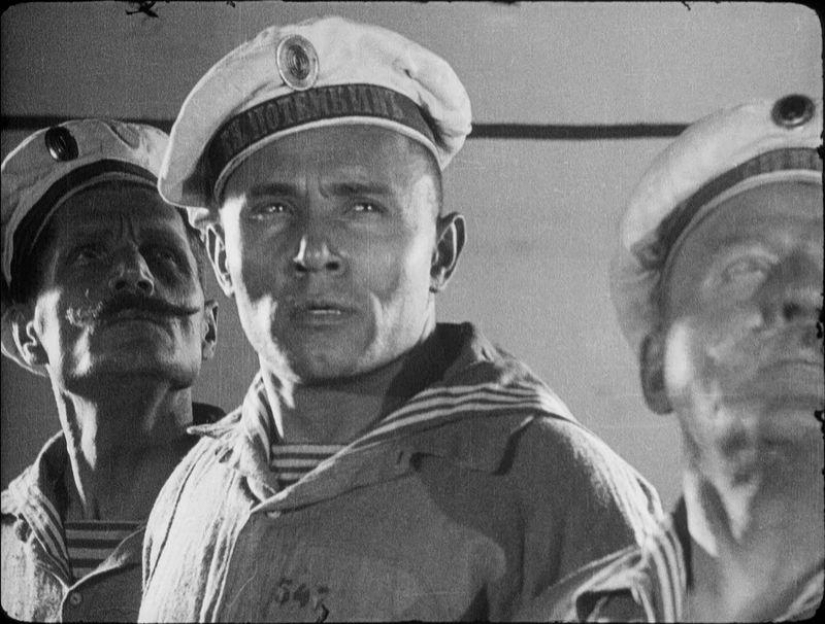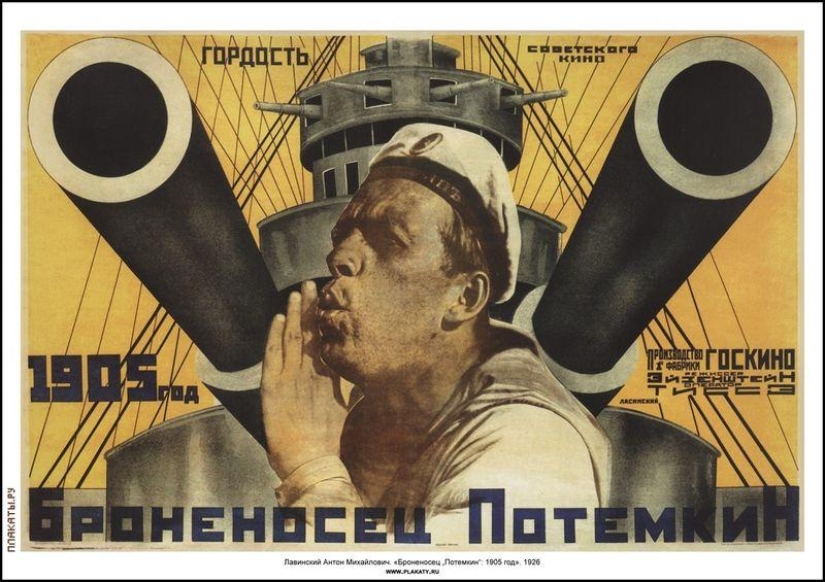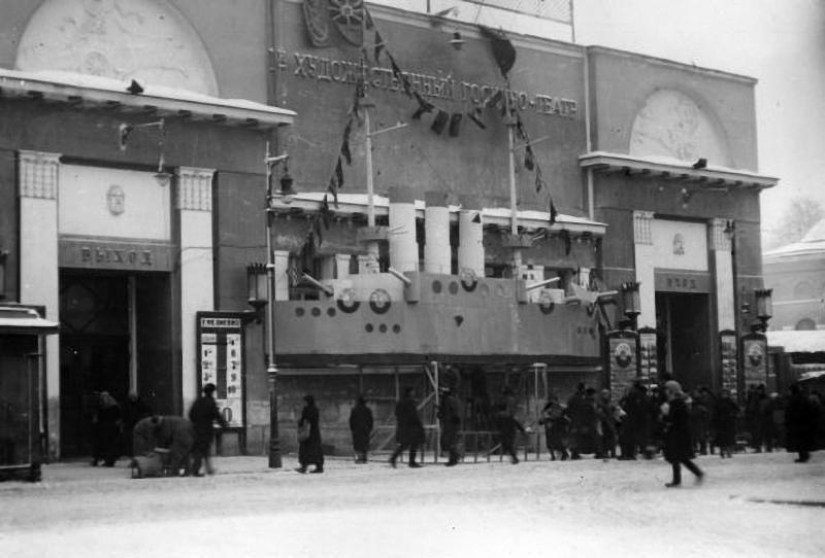How the film legend "Battleship "Potemkin" was created
On January 18, 1926, Sergei Eisenstein's feature film Battleship Potemkin was released on the screens of the country, which subsequently had a huge impact on the entire world cinema.
We present you interesting facts from the history of the creation of one of the first Soviet movie theaters.
(10 photos in total)


1. "Battleship "Potemkin" — a silent black-and-white feature film shot at the Mosfilm film studio in 1925. The scenario according to which the film was shot is based on real events that took place in June 1905, when the crew on the battleship Prince Potemkin Tauric rebelled and seized the ship.

2. The triumphal procession of the "Battleship "Potemkin" began with the cinema "Art" on the Arbat, which was then called the "State Electrotheater". The first viewers who came there on January 18, 1926 for the premiere were amazed not only by the film, but also by the premiere setting. All the service personnel, from the usher to the projectionist, were dressed in naval uniforms, and the facade of the cinema resembled a large model of a warship (pictured).
Before the show, the bugler played the anthem of the uprising. In the first few weeks alone, the film was watched by over 300 thousand Soviet viewers. The audience read the inscriptions on the screen almost in chorus.
3. The task of the government commission on preparation for the 20th anniversary of the first Russian Revolution (1905) was as follows: the film should be prepared for screening in December 1925 at a solemn meeting at the Bolshoi Theater. The deadlines were impossibly short (filming began in June), and then the weather interfered with the filming process: from the gloomy Leningrad in the early autumn, I had to urgently move to sunny Odessa, from the multi—event plot of the script to choose only one episode - the uprising on the battleship Potemkin.
4. In the future, the film was censored: some frames and intermediate credits were removed, the words of Leon Trotsky in the prologue were replaced by a quote from Vladimir Lenin. In 2005, under the general guidance of the Deutsche Kinemathek Foundation, Gosfilmofond and The Russian State Archive of Literature and Art has restored the author's version of the film.
5. The film was first voiced in 1930, then restored and re-voiced in 1950 (composer Nikolai Kryukov), and finally, in 1965, Dmitry Shostakovich wrote the music for the film.
6. The painting was highly appreciated by the Propaganda Minister of the Third Reich, Joseph Goebbels. At a meeting with cinematographers on March 28, 1933, he said: "This is a wonderful film. From a cinematic point of view, he is incomparable. Those who are not firm in their beliefs, after watching it, perhaps, could even become a Bolshevik. This proves once again that a certain trend can be successfully incorporated into a masterpiece. Even the worst ideas can be propagated by artistic means."
7. From the vicissitudes of the real uprising on the battleship and in In Odessa, Eisenstein chooses the main events, thickening them with the method of "mounting attractions" developed in the director's previous film, "Strike". We are talking about creating a series of shock, the most impressive moments of the screen spectacle, causing an acute emotional reaction of the viewer and directing his thought in the direction the director needs. They are shown in context, creating complex meanings of the film.
8. "Battleship Potemkin" is also considered the first color Russian film: Eisenstein personally painted the flag, which was raised over the ship by the rebellious sailors, in red with a brush on the film.
9. Who has not seen the famous shots of a baby carriage rolling down the stairs from the cult film by Sergei Eisenstein "Battleship Potemkin". The film has been repeatedly cited. The scene of the shooting on the stairs, in particular the frame with the rolling stroller, was reflected in dozens of other films. It was after this that the main Odessa staircase became world famous and was named Potemkinskaya (here is proof of the power of cinema).
10. In 1926, the American Film Academy recognized the film as the best. In the same year, the Battleship Potemkin won a prize at the World Exhibition in Paris. In 1958 , according to the results of an international survey of film critics in In Brussels, it was ranked among the 12 best films of all time. In 1978, he became the first among the hundred best films according to a survey of film critics in the world. In the list of the most significant pictures of world cinema, which is published in the magazine Sight & Sound every ten years since 1952, the creation of Sergei Eisenstein is constantly present. Also, the film is located on the third line in the list of "100 best films of world cinema" according to Empire magazine, compiled in 2010.
Keywords: Cinematography | Legend | Film
